How to Help a Child That Can't Read
How to Develop Reading Fluency
If your child struggles with reading fluency—and listening to him read aloud is a painful experience—so this commodity is for you!

We've all heard kids who read aloud with a choppy, almost robotic tone. It's hard to grasp the meaning of what they're reading. They may read too fast, or they may read too slowly and laboriously.
On the other hand, when someone reads aloud with fluency, it's like shooting fish in a barrel to understand what they are reading, and it'due south a please to listen to them. Fluent readers add emphasis to sure words and convey meaning with their expression.
What Is Reading Fluency?
Fluency is the ability to read with accuracy, proper speed, and meaningful expression.
Fluency is too a pregnant indicator of reading comprehension. When children can read fluently, it ways that instead of using brain power for decoding, they tin can plough their attending to the significant of the text.
And information technology gets even meliorate. When students reach higher levels of fluency, they're able to tap into metacognitive strategies. This ways that they can visualize, question, and interpret what they are reading, and they can recall about their own feelings and opinions while reading text. This is the highest level of reading comprehension.
Obviously, fluency is highly desirable. And then let'south talk well-nigh how nosotros can become your kid to this signal.
Practiced Decoding Skills Come First
Don't even offset working on fluency until your child can decode all the words in the text.
Does your child stumble over words? Substitute words? Demand to audio out multiple words on the folio? These are all signs that yous need to work on decoding showtime; otherwise, y'all volition both be frustrated.
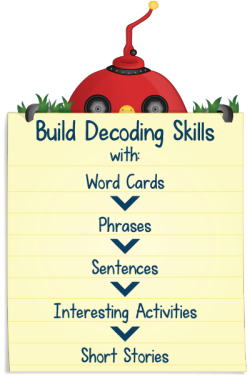
In All Near Reading, nosotros requite a lot of attending to decoding before nosotros expect fluency.
- Kids read words in isolation (on flashcards that we telephone call Discussion Cards).
- They read words in phrases.
- And so they read words in sentences.
- They encounter the words on fun and motivating activity sheets.
- And finally, they come across the words in short stories.
By this indicate, students have significantly expanded their sight word vocabulary, and they have reached the point of automaticity for almost of the words in the story.
So—and only then—we piece of work on fluency skills.
The Importance of Vocabulary for Fluency
Does your kid understand the pregnant of all the words he's reading?
If not, fluency will exist an uphill boxing for both of you. Even if he can decode the words properly, when he runs into a word he doesn't understand, he will be unable to read smoothly and with expression.
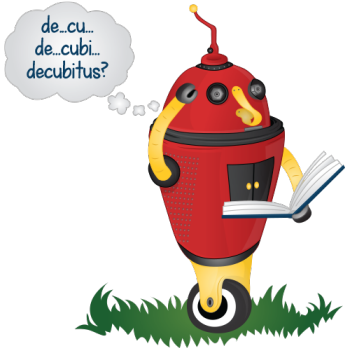
Have you ever tried to read a book on a topic you were unfamiliar with? As yous encountered words you didn't know or understand, your fluency probably faltered. And quite likely, by the time you lot reached the stop of a judgement, you lot had probably forgotten what the kickoff part of the sentence fifty-fifty said.
That's why we make sure students sympathise all the words in the short stories in our reading programwithout dumbing downwards the stories with simplistic words. On the reverse, we purposely introduce words that are very likely new to the reader. Nosotros use interesting, heed-expanding geographic locations, as well as a large variety of historical settings and nationalities.
But we don't leave readers stranded with no hope of understanding what they are reading.
Instead, nosotros have brusque attending-grabbing discussions before each story is read. We highlight new vocabulary words through illustrations, and have what the student already knows and use that equally a "claw" for the new vocabulary words.
With this method, the student is mentally prepared when he encounters the give-and-take again in the short stories. He can read the word smoothly because he knows how it should exist pronounced, and he tin can go along visualizing the storyline in his mind because he isn't wrestling with the meaning.
When it comes to fluent reading, it's easy to see why it's a large help to have a skilful vocabulary that is relative to what your kid is reading almost.
Provide a Skillful Role Model
Another important cistron in the development of fluency is the need for fluency part models. When your child hears fluent reading, it will be easier for him to mimic information technology and so somewhen arrive his own.
When y'all read aloud to your child, yous're setting an case. Your child is mentally absorbing your tone, your speed, and your inflections. That's one of the reasons we encourage you to read aloud to your child for at least 20 minutes every day. Your kid will become familiar with how a reader's voice helps written text make sense.
Audiobooks are some other fantastic resource for providing role models, non to mention they help you lot give your voice a rest! Here are some current favorites, to become you started.
- The Ramona Quimby Collection by Beverly Cleary (narrated by Stockard Channing)
- Charlotte's Web past E.B. White (narrated by George Plimpton)
- Redwall by Brian Jacques (narrated by full cast)
Another thing that happens when your child hears books read aloud is that he learns "phrasing."
Why Phrasing Helps
Consider this judgement:

This judgement would be really boring to listen to if each word were spoken with even pacing.

Fluent readers naturally grouping phrases, similar this:

They automatically divide text into meaningful chunks, which is called phrasing . Children who take good phrasing intuitively know when to pause.
But what if your child doesn't know how to do this yet? How tin yous teach phrasing?
To help your child get the hang of it, you can employ a pencil to "swoop" under each phrase.

Phrasing commonly occurs with prepositional phrases, merely honestly, your own intuition will serve you well as you mark the page. Think of how you would read the text; there are no admittedly correct answers here, especially equally y'all get into more advanced text.
If y'all use All Nearly Reading, you'll run into that our Level ane readers and Practice Sheets from Levels 1-iv are designed with intentional line breaks to aid your child larn and understand phrasing. Hither's an case:
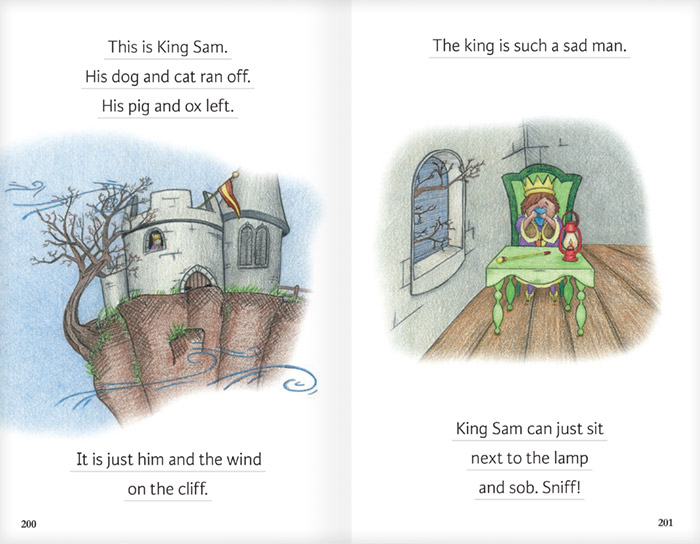
The pages are formatted to allow commencement readers to read more smoothly and comprehend the text more easily. The line breaks promote natural phrasing.
Encourage Expressive Reading
After years of listening to read-alouds, your child is probably familiar with how to interpret dialogue—reading text the way someone would say information technology. But information technology can still take some exercise for novice readers to get the hang of calculation expression to their own voices.
One way to encourage good expression is to model it with buddy reading. There are several forms of buddy reading, just for encouraging expression, it is well-nigh helpful if you read a page and and then have your educatee read the same folio later you. Demonstrate how to pay attention to punctuation, and how to emphasize important words.
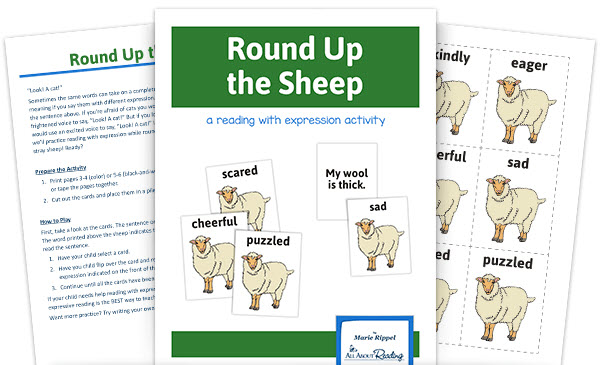
Another great style to practise expressive reading is with an activity like this 1 from All Almost Reading.
In "Circular Upwardly the Sheep," your kid will discover that the same words tin accept on a completely different meaning when you say them with different expression. As you can see, encouraging expression and increasing fluency doesn't have to exist boring!
Silent Reading Isn't as Effective for Improving Reading Fluency
This idea is probably clear from the previous sections, but it'southward of import enough that I desire to be certain to say information technology outright:
Have your child read aloud, not silently.
Silent reading certainly has its place, only oral reading practice is much more effective in developing fluency.
Having an audience can be motivating and can give your student an opportunity to practice meaningful expression. Encourage your kid to read to someone else, such equally a sibling, a visiting neighbor, Grandma, or a parent.
Kids Tin Self-Assess, Too!
Information technology can be really helpful for kids to hear themselves read. And recording themselves can be fun!
Need an easy manner to record? Here's a recording program you can download for free.
After recording, permit your child assess his own reading. How did it sound? Did it sound natural? Choppy? Did he pay attention to punctuation? Encourage him to discover one thing he did well and one thing that needs comeback. So he can re-tape and effort to improve. Even professional person speakers do this!
The Bottom Line on Improving Reading Fluency
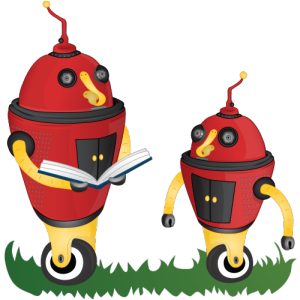
Reading fluency develops gradually, but every bit yous can come across, at that place is a lot you tin can do to promote information technology.
As long as your child has potent enough decoding skills, the side by side steps are to:
- Assist build a stiff vocabulary.
- Provide a good role model, whether that is you or fantastic audiobook narrators.
- Utilise phrasing and "swooping" to break sentences into meaningful chunks.
- Tap into buddy reading to encourage expressive reading.
- Accept your child record himself reading, and and then cocky-assess.
And finally, go along encouraging your child! With your help, he won't read similar a robot forever. Fluency will come up!
The All About Reading program walks you and your child through all the steps to assistance your child achieve fluency. The program is multisensory, motivating, and consummate, with everything you need to raise a strong reader. And if y'all demand a helping mitt, we're here for you lot.
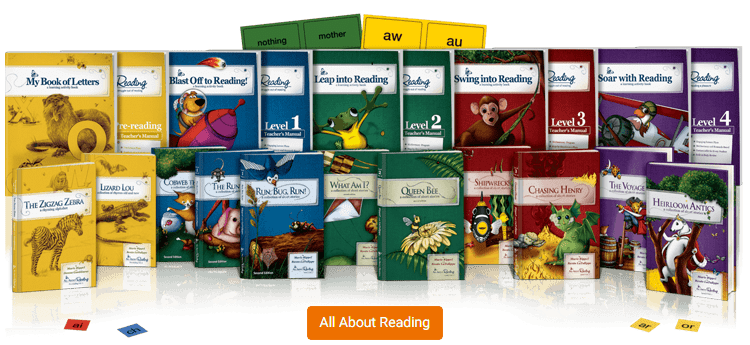
What's your take on teaching reading fluency? Take anything else to share? Let me know in the comments below!
Source: https://blog.allaboutlearningpress.com/reading-fluency/
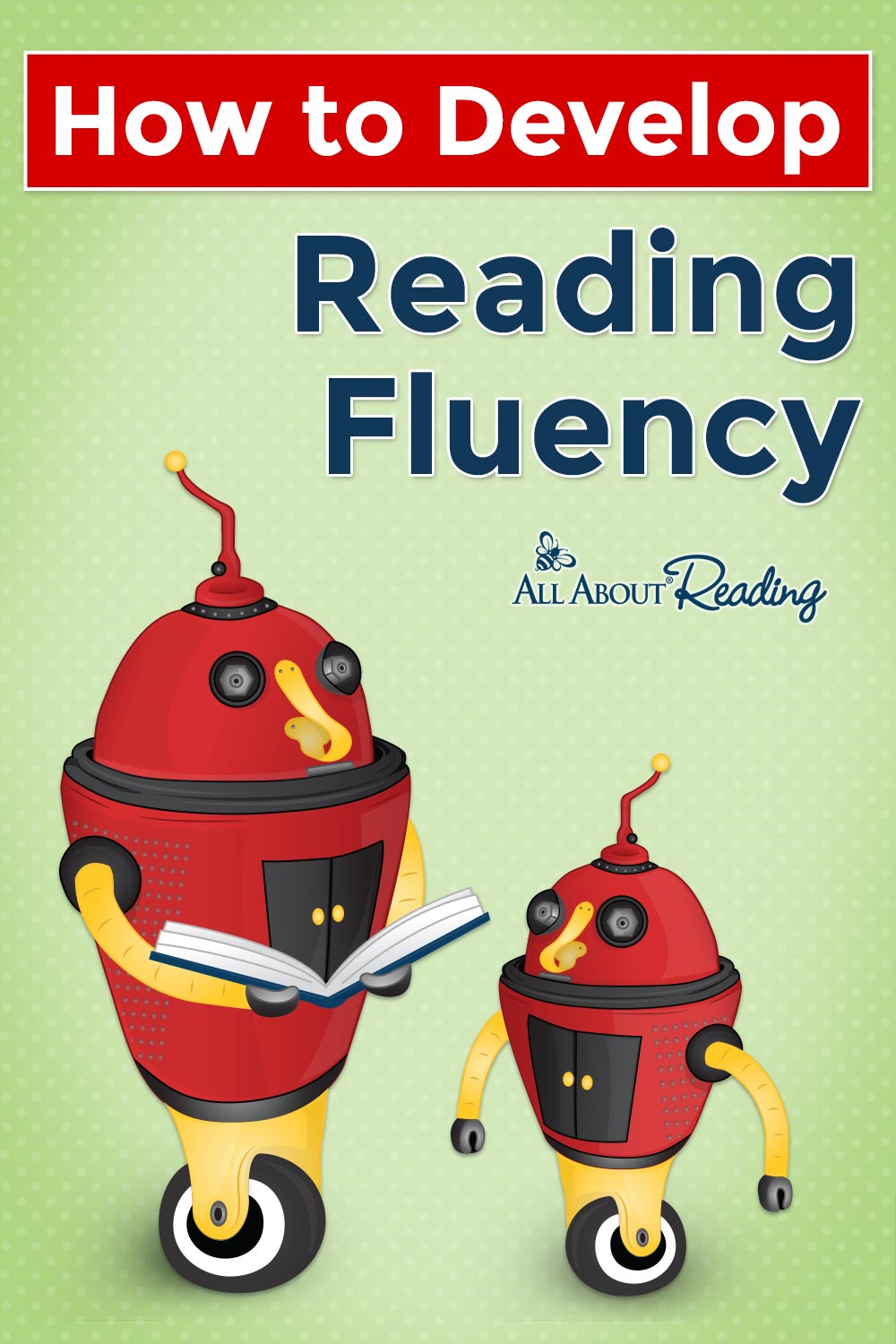
0 Response to "How to Help a Child That Can't Read"
Post a Comment